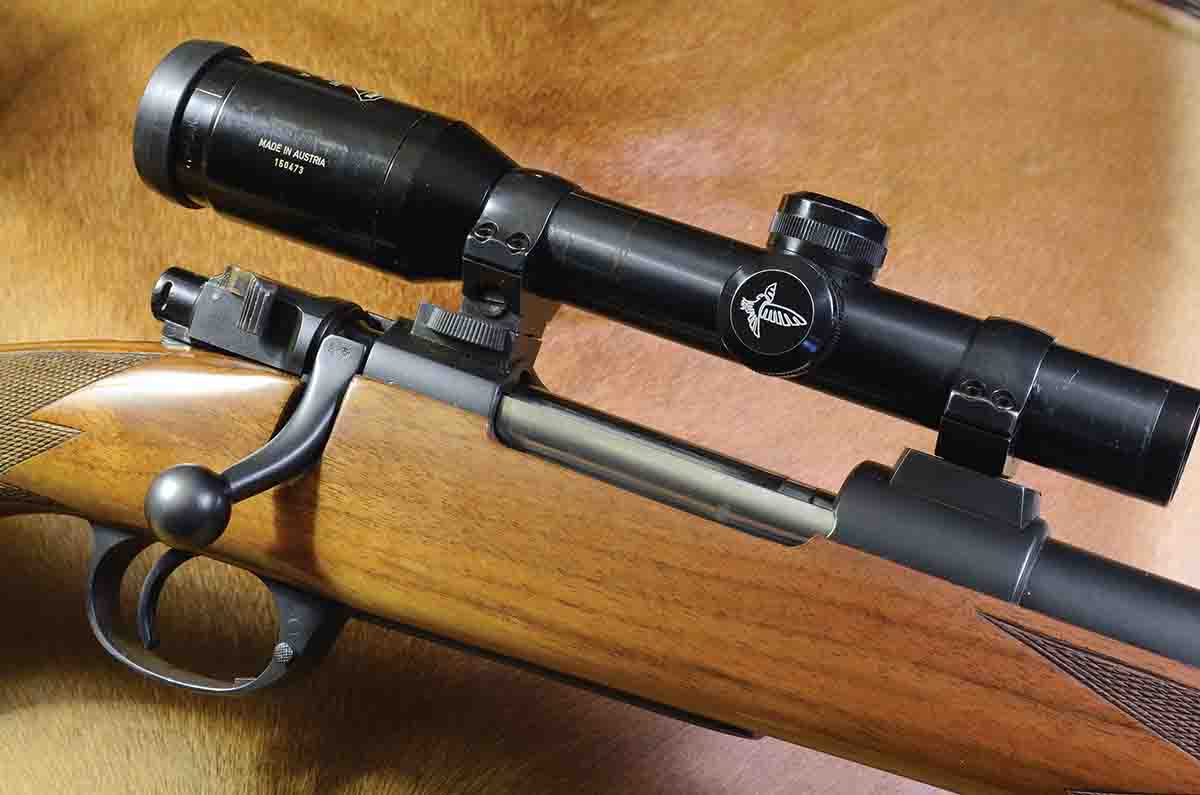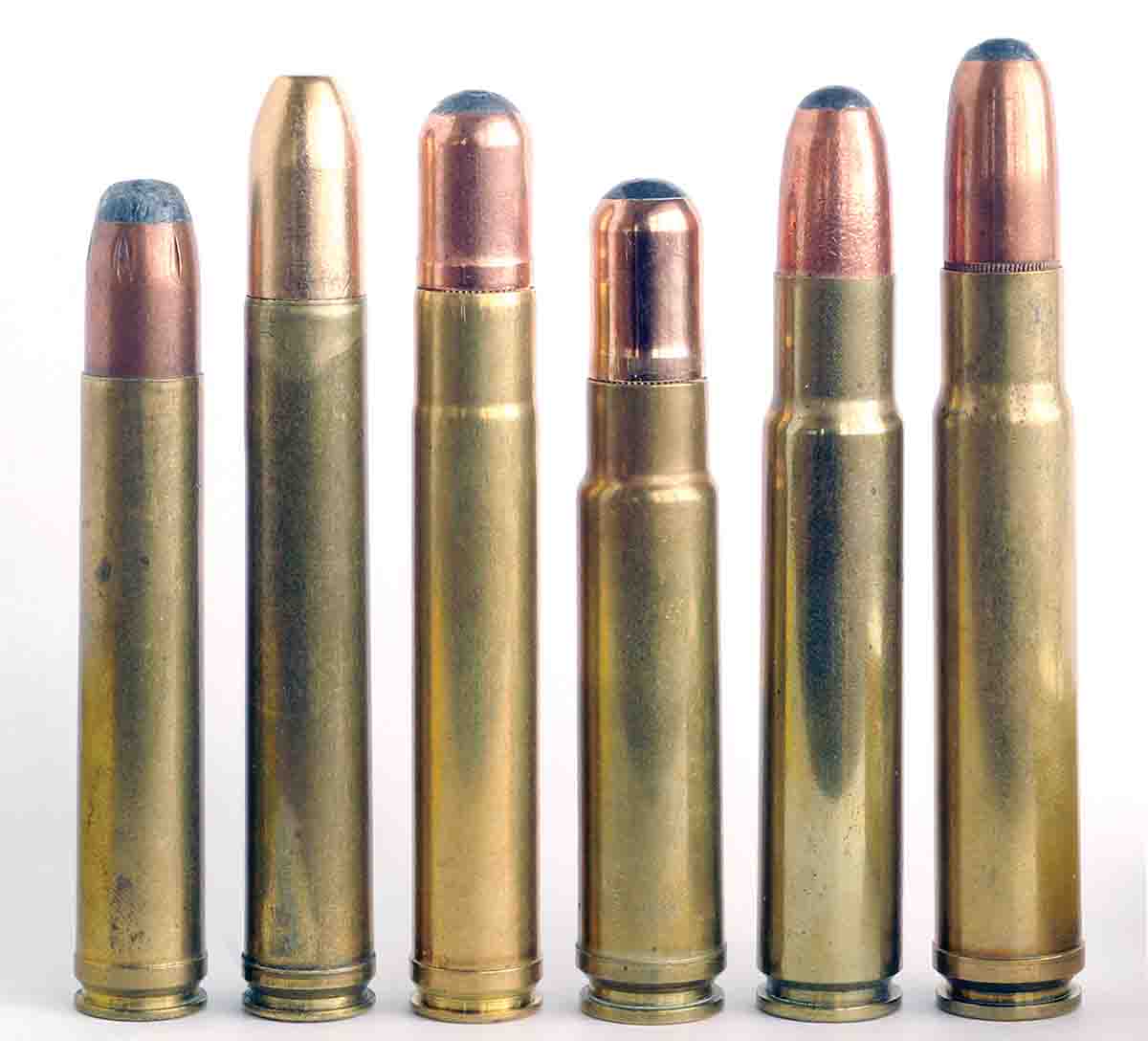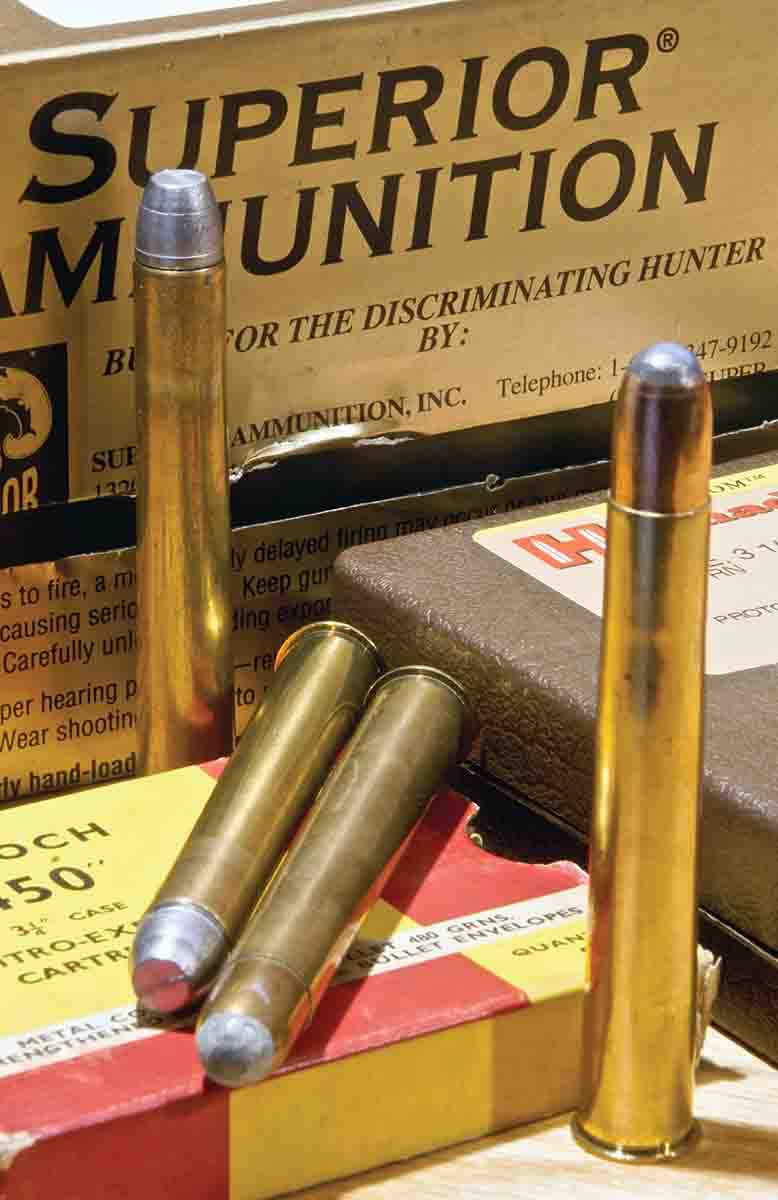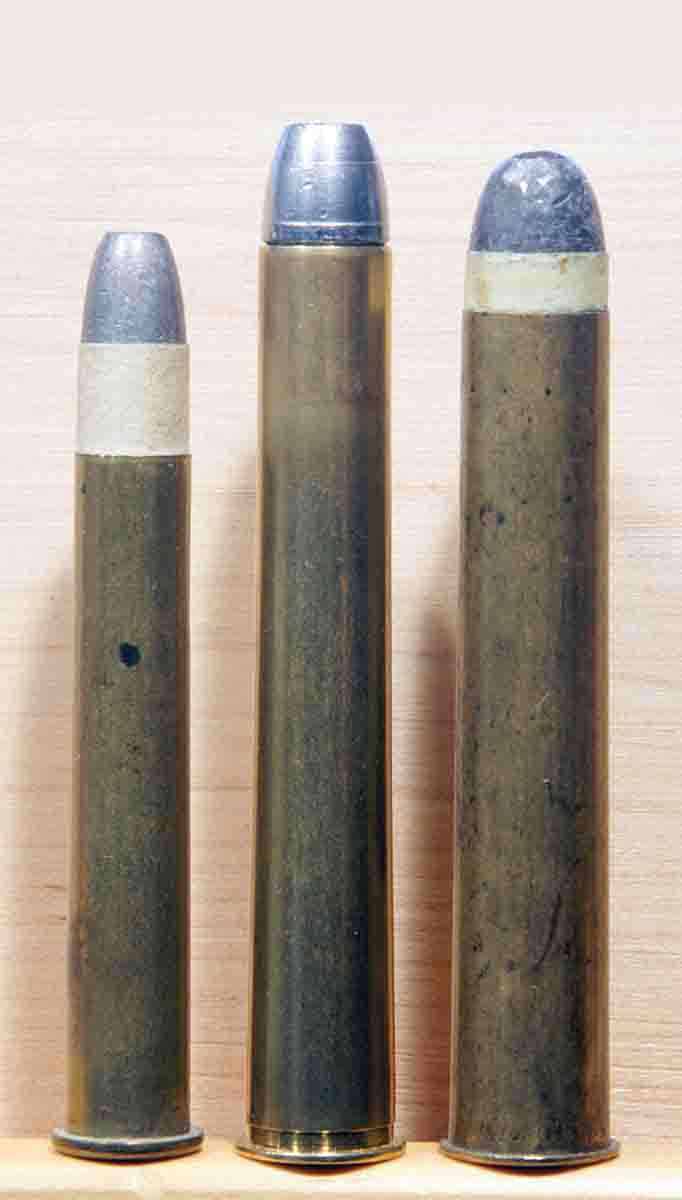Big Enough and Small Enough
Why the .450 Is The Best All-Around Big Bore
other By: Terry Wieland | May, 25


The .450 is one of the oldest, and certainly the most popular and widespread, of all the big-bore calibers. Its bullet diameter, for most uses, is .458 inch, and many newer cartridges, including the .458 Winchester Magnum and .458 Lott, use that designation. By any name, however, they are all part of the family of “Big .450s.”
The .450 spans both smokeless and black-powder cartridges and goes all the way back to muzzleloaders. We first encounter it in military and target rifles, the most famous being the Whitworth variation on the British Enfield (caliber .450) used by Confederate soldiers during the Civil War. The Whitworth fires a hexagonal bullet that fits the unique Whitworth rifling and gives both accuracy and killing power to 1,000 yards and beyond.
In 1854, machine-tool expert Sir Joseph Whitworth was asked by the British government to find a better rifle to replace its .577 muskets. After extensive research, Whitworth determined that .450 inch was the optimum caliber for combining power, range and accuracy. He improved the exist- ing Enfield musket in various ways and adapted it to his new .451-inch bullet design. This was the beginning of the .450’s dominance.
After 1860, as cartridge rifles replaced muzzleloaders, .45 became the most popular caliber for rifles of all kinds, including the military, hunting and target-shooting. There were so many .45 black-powder variations, it is impossible to count them all. Every riflemaker, it seemed, had his own design. They were long and short, bottleneck and straight; bullets included solid lead, hollowbase and hollowpoint. They were both paper patched and lubricated lead, ranged in weight from 250 to 500 grains and were fired at velocities from 1,200 to 1,800 fps.

With black powder, the .450 was unchallenged as the best all-around caliber. Its heavy bullet carried easily out to 1,000 yards and resisted wind drift. As a target rifle, it could be extremely accurate. For hunting, its heavy bullets had sufficient killing power for all except dangerous game. The .450 was regarded in England as a stalking rifle for red stag; in America, it was the quintessential buffalo gun, with enough power for the big bears.
When England adopted a single-shot military rifle in 1871, it was the .577/.450 Martini-Henry; in America, two years later, it was the .45-70 chambered in the trapdoor Springfield. Ammunition for the .45-70 has been in continuous production ever since 1873, in spite of perennial proclamations of obsolescence. Even today, the .45-70 has adherents for both target shooting and hunting. With smokeless powder, it is even better than it was with black, exhibiting another trait of the .450s: Most of the favorite black-powder calibers, including the .40, .44 and .50, lost ground with the move to smokeless. With the .45-70, smokeless only improved it, and it was even used in the first “auto feed” weapons, being adapted to the Gatling gun in 1881.

In England, the .450 Express 31⁄4 Inch was the best of the myriad black-powder .450s. By coincidence, it is almost identical in case size and configuration to the American .45-120. Both are rimmed, straight cases and more than 3.0 inches long. The .45-120 came along too late to take part in the slaughter of the buffalo; the .450s involved in that were the .45-70, .45-90, .45-100 and .45-110. Still, the .45-120 has become symbolic of the age, and there are probably more .45-120s in use today than there were in the 1880s.
If one were forced to pick the one .450 that is the very best with black powder, it would be the .450 Express 31⁄4 Inch. It holds 120 grains of powder and can achieve 1,700 fps with a 300-grain bullet. Original loads approached 1,800 fps. Devotees of the .45-70 may quarrel with that assessment, and for some uses, they might be right.
It is not surprising, however, that Rigby of London chose that case when deciding it was time to put a large helping of smokeless powder behind a jacketed bullet and create the first “nitro express.” This landmark cartridge was not the result of a sudden brain wave on the part of Rigby’s designers, nor did it work on the first try. Rigby’s records tell the story of its development through the listing of barrels and actions that were built, tested and discarded before the combination of thickness, weight and length that worked was found.
Firearm scholars point to the introduction of the .450 Nitro Express as one of the turning points in firearms history, and some wonder why it took so long coming. After all, the French adopted a military smokeless-powder cartridge, the 8mm Lebel, in 1886, and other countries quickly followed suit. Why the delay?
Compared with a hard-hitting cartridge for dangerous game, those developments were relatively straightforward. Rigby’s difficulty was not merely creating an action strong enough to handle the higher pressures of smokeless; it also needed a rifle that could withstand the recoil. The development involved the use of new steels for barrels and actions – in fact, a redesign from the ground up of every aspect of double-rifle making. Although the resulting double rifles look much like their previous black-powder counterparts, there are many differences, most of which (like the quality of the steel) are invisible to the eye.

The .450 Nitro Express was an almost instant success. Although big, black-powder dangerous-game rifles continued to be made into the 1920s, chambered for huge cartridges like the .577 Express or as 10- and 8-bore rifles, they were used mainly by die-hards and settlers who could not afford the price of a nitro express from Rigby, Holland & Holland or W.J. Jeffery. The .450 NE proved to be exactly right: powerful enough for anything, yet small enough that it could be chambered in a rifle that was comfortable both to carry and to shoot.
British gunmakers have always preferred to have proprietary cartridges for their own rifles. Under this system, a company like Holland & Holland contracted with an ammunition maker like Kynoch that would make ammunition and sell it only to H&H. Holland would, in turn, sell it to its clients, and it was the only source of ammunition. This has pros and cons; most Americans look only at the disadvantages, but there were positive aspects too. For one thing, in an age of more generous tolerances, it guaranteed H&H quality in H&H ammunition and kept the company’s clients alive.
There were some proprietary .450s, including Holland’s .500/.450 (the .500 31⁄4 Inch necked down) but most makers used either the .450 NE or the huge .450 No. 2, designed and released “to the trade” by Eley Brothers around 1902.
In 1905, however, it all ground to a halt when the British government forbade India and the Sudan to import .450-caliber ammunition. The fear was that, in the Sudan, the bullets might be used in the large numbers of Martini-Henry rifles that had been captured by the Mahdi’s forces before Kitchener’s reconquest. India, however, was the greater concern. It was the jewel in the crown, of vastly more importance than all of Africa put together, and there were always revolts, rebellions and unrest on its borders with Afghan- istan, as well as inside the territory itself.
Since India was a much larger market for the English gunmakers, they all but abandoned the .450 at that point and designed comparable cartridges that would be legal in India. It says much about the .450 that the cartridges developed to replace it, including the .470 Nitro Express and Holland’s .500/.465, sought to duplicate its ballistics as far as possible, rather than going radically up or down in diameter. Both .400s and .500s already existed, but neither exhibited the sterling all-around qualities of the .450.
In America, from 1900 until 1956, the factory .45s consisted of the .45-70 and little else. Then Winchester shocked the world with its .458 Winchester Magnum – a straight, belted cartridge chambered in the Model 70 bolt action, intended for use against elephant, Cape buffalo and other large and dangerous critters.
In a stroke, the .458 Winchester Magnum displaced virtually all the .450 wildcats, most of which were based on the .375 H&H case necked up, trimmed and blown out. These had sprung up through the 1930s and 1940s and included some fairly well known numbers, including the .450 Watts (used by Jack O’Connor on several safaris) and the .450 Ackley. Winchester’s .458 advertised the ballistics of the .450 NE without actually delivering them, but even so, it became a standard on African safaris with both clients and professional hunters.
Aside from offering an economical alternative to the increasingly expensive English doubles and bolt actions, the .458 Winchester Magnum brought big bores to the attention of the American public. Many shooters bought them knowing they would never be taken to Africa, but just owning one gave a man a sense of connection with safaris and dangerous game.
The .458’s shortcomings in actual use – its heavily compacted powder gave ignition problems – provoked Jack Lott into developing his .458 Lott. Lott’s cartridge was simply a .458 Winchester Magnum lengthened by 0.3 inch, allowing more powder without compression. It has since become a standard chambering, with lots of factory ammunition available. The Lott delivers the goods (i.e., .450 NE ballistics) without excessive pressures. For the average man going on safari, the Lott is, from every angle, the best choice for a big rifle.
With .450s once again getting some attention, a few riflemakers used the caliber as the basis for new cartridges intended specifically for Alaska’s big bears. These included the very short, belted .450 Marlin and the wildcat, rimmed .450 Alaskan, both designed for use in lever-action rifles.
The .450 also made a comeback in target shooting. Led by the .45-70, it is a popular caliber for both long-range black-powder target and silhouette shooting. Some rifles are also made in .45-90 for cowboy action.
When Don Allen designed a family of cartridges for his Dakota rifles in the 1990s, the .450 was the largest. Essentially a .416 Rigby necked up to .450, its case is similar to both the .450 Rigby, introduced around 1995, and the belted .460 Weatherby Magnum of 1958.
Although these bulky cartridges require a magnum action, they are remarkably versatile. They can be handloaded to deliver ballistics significantly sharper than the .458 Lott, while keeping pressures down and recoil tolerable. A 500-grain bullet at 2,400 fps is practically effortless, and with their large case capacity, bullets as heavy as 600 grains can be loaded to useful velocities without either powder compression or excessive pressures.
Sir Joseph Whitworth’s analysis of calibers occurred 160 years ago, yet his conclusion that .450 inch was the best overall has never been contradicted, even with the advent of smokeless powder, jacketed bullets and modern rifles.

